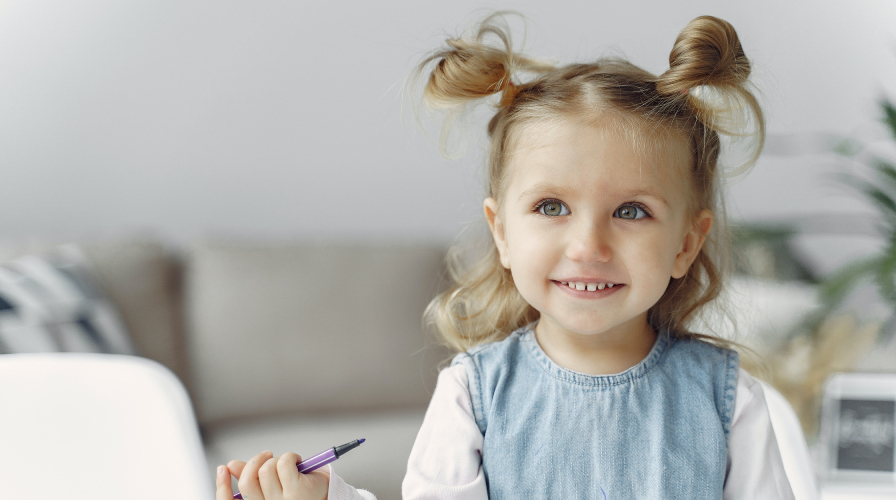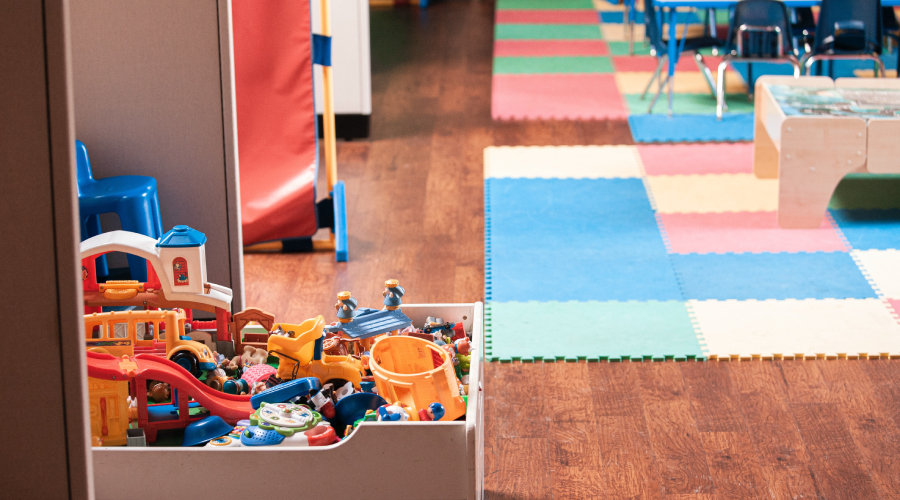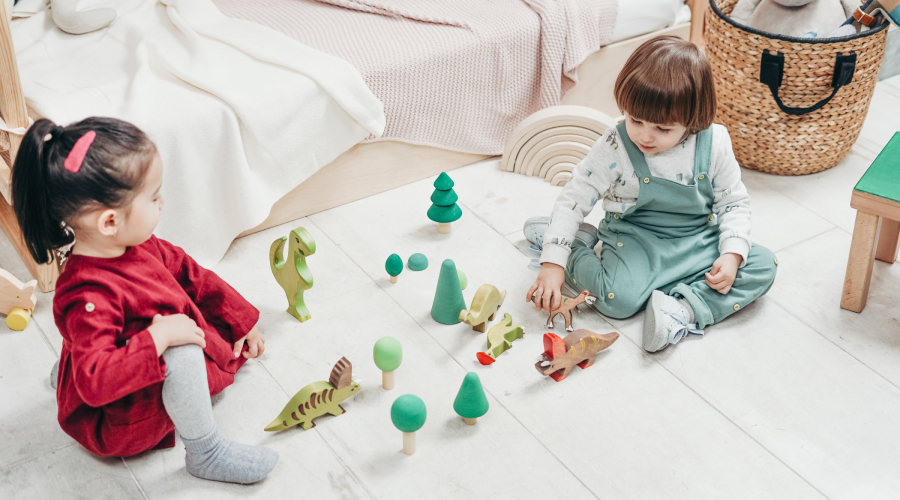settings
children
With Famly since
Whether or not we can quite put a finger on why, we all have an emotional connection with light. There’s a reason why we illuminate our bedroom with lamps and candles instead of industrial floodlights.
But have you ever stopped to think about the way you’ve lit up your Early Years setting?
If you haven’t, you’ve come to the right place.
In this article, we’ll look at how you can use lighting to help direct children’s moods and energy, create new spaces within a room, and help the little ones feel more at ease at your child care setting.
Like all of us, children have an intuitive response to light— and research suggests that it can help shape the way they learn. So let’s shed some light on the subject.

Thinking about light as a tool
Throughout your day, you’ve got to help children through different moods and energy levels for the activities you’re doing. We’re all used to using our voice, our gestures, and our instructions to help guide children — but you might not think of lighting as a part of your toolkit.
But according to Imke Wies van Mil, lighting has a whole lot to do with how we feel and act.
Imke is a lighting designer based in Denmark, who is working towards a Ph.D. from the Royal Danish Academy of Fine Arts in architectural design. Much of her work focuses on how different lighting makes us think and feel, and how we can use that to change behavior.
She says that children as young as two can recognize different emotional and atmospheric qualities to light, and that you can use this to shape more comfortable classrooms.
“Lighting helps us create different atmospheres — by changing the lighting, you can create a change in the room,” Imke says. “Maybe you want children to settle down and be quiet, or have them be active and playful, or draw them in as a small group. For all of these, you can use lighting as a tool.”
The big ideas
How does light affect our behavior?
Our response to lighting is intuitive, coded into our basic brain instincts. Whether we can really explain it or not, we recognize that light has a certain emotional value to it. Just think about the difference between a cozy lamp in a little reading nook, and the bare bulb buzzing in your garage.
Why do those two lights feel so different? Well, we could point to concrete factors, like the color of the light, how bright it is, or where it’s coming from. But then we’ve got to talk about how our brains, and children’s brains, process that light.
As Imke explains, light affects our brain in three key ways:
- Visual perception – This is the concrete, practical part — it’s about our brains deciding whether or not we’ve got enough light to see properly. When most of us think about lighting, this is about as far as we go.
- Personal interpretation – This is about our subjective interpretation of light: How it makes us feel, what it reminds us of, whether we think it’s comfortable or appropriate. Part of this is subjective, so it depends on our own experiences, and our personal and cultural background. But there are patterns — warm, dim, yellow-toned light tends to be calming, where bright, white, overhead light gets us energized.
- Circadian rhythms – This part’s more instinctive — it’s how our bodies’ physiological processes respond to light. Ever notice how you get tired earlier during the winter, when it gets dark earlier in the evening? That’s an example of your body reacting to the light around you, and adjusting your mood and energy. In your classroom, regulating the overall amount of light is a way to affect this — a great example is how we switch off the lights for naptime.

3 ways to use lights in your setting
Right, enough theory. How can you make this work in your own early learning environment?
Here are three examples of different lights you can use in your child care setting, and how they can support the activities you do every day.
- Pendant lamps: These are a great way of creating what Imke calls “pools of light” — intimate spaces for smaller groups. Pendant lamps are ideal for your reading corner, or you could hang them over communal tables and switch them on for some quiet focus time.
- Portable lamps: In your Early Years setting, Imke recommends portable, battery-powered lamps as a great way to let children use light in just the way they prefer. It allows them to take the light down to their own scale, and create the right atmosphere for smaller activities.
- Overhead lighting: You’ve probably already got this in your classroom setting, and it’s not a bad thing. Imke calls this bright, broad light “general light”. It’s a great light to get the whole group connected in one activity, and particularly something more high energy — like open playtime, or for a boost of energy after lunch or naptime.
- Natural lighting: Not every room has the luxury of great natural light, but if you do, it’s smart to make use of it. Natural lighting has been shown to help boost our mood, regulate our sleep schedule, and for older children, even raise test scores. Plus, it’s a good way to cut back on your power bills.

Case study: Classroom lighting in Denmark
Much of Imke’s focus on lighting and learning comes from a 2018 study she led in a Danish primary school in the city of Aarhus. The project looked at how interior lighting influenced children’s ability to focus in classrooms, measured by the noise levels produced under different lighting setups.
“We focused on what teachers saw as their biggest need — to be able to have children calm and focused, and to decrease the amount of disruptive behavior,” Imke says. “Basically, we tried to see if classroom lights could support gentle environments, where children would feel more settled when it was time to concentrate.”
The experiment focused on classrooms of children aged 6 to 11, measuring the difference in classroom noise levels when children had to work on quiet tasks under bright overhead lights, and under the focused light of a hanging pendant lamp. In the majority of cases, the team found that using the pendant lamps’ focused lighting resulted in a measurable drop in classroom noise levels, and more positive feedback from both children and teachers.
“We found that light can intuitively encourage different behavior, especially when trying to create a quiet, peaceful atmosphere,” Imke says. “It was a way to help children feel the same sort of mood from their environment, which helped them move and act in the same direction.”
Shaping space for children
We use things like furniture or wall decorations to change our sense of space, and to make smaller, purposeful areas within a larger room. But light can be a big part of this, too. If you get on the floor to play with children, why not bring the light down with you too?
“Adults design buildings on a scale that’s based on a 5’11” human being. When you’re a tiny person in these spaces, everything seems much larger, which can be a lot to handle,” Imke says. “But you can use light to help bring that space to their level, so they feel more like the space is designed for them.”
That’s what good lighting in the Early Years is about, really — just helping children feel more comfortable in your space. Lighting doesn’t need to be expensive, or complex. What’s important is that you think of lighting as one more tool in your toolbox to help create the best environment for the little ones to learn.
“Lighting design can become a part of how you teach if you use it to create spaces that draw them in, and help them feel focused and calm for your activities,” Imke says. “Ultimately, it’s about giving children this intuitive understanding that they are important, they are seen, and this space is about them.”
Try learning journals for free
Add observations, and build digital learning journals to share with families instantly. All with your completely free 14-day trial.
Get started









